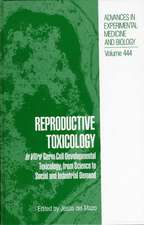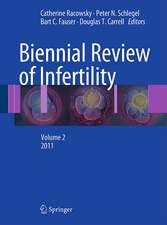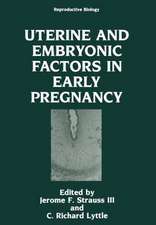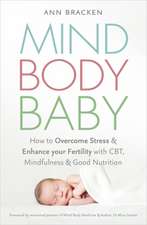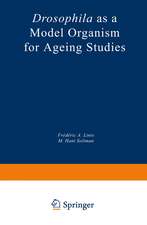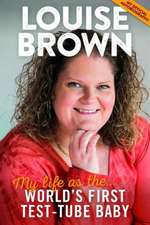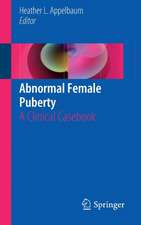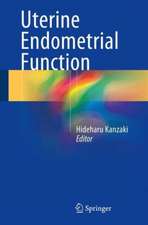Bioactive Components of Human Milk: Advances in Experimental Medicine and Biology, cartea 501
Editat de David S. Newburgen Limba Engleză Paperback – 14 oct 2012
| Toate formatele și edițiile | Preț | Express |
|---|---|---|
| Paperback (1) | 1436.77 lei 6-8 săpt. | |
| Springer Us – 14 oct 2012 | 1436.77 lei 6-8 săpt. | |
| Hardback (1) | 1444.28 lei 6-8 săpt. | |
| Springer Us – 31 dec 2001 | 1444.28 lei 6-8 săpt. |
Din seria Advances in Experimental Medicine and Biology
- 9%
 Preț: 719.56 lei
Preț: 719.56 lei - 5%
 Preț: 717.00 lei
Preț: 717.00 lei - 5%
 Preț: 717.00 lei
Preț: 717.00 lei - 15%
 Preț: 640.24 lei
Preț: 640.24 lei - 5%
 Preț: 715.71 lei
Preț: 715.71 lei - 5%
 Preț: 716.28 lei
Preț: 716.28 lei - 20%
 Preț: 691.93 lei
Preț: 691.93 lei - 5%
 Preț: 1031.00 lei
Preț: 1031.00 lei - 5%
 Preț: 820.42 lei
Preț: 820.42 lei - 5%
 Preț: 716.28 lei
Preț: 716.28 lei - 15%
 Preț: 641.38 lei
Preț: 641.38 lei - 5%
 Preț: 717.20 lei
Preț: 717.20 lei - 5%
 Preț: 715.35 lei
Preț: 715.35 lei - 5%
 Preț: 1113.83 lei
Preț: 1113.83 lei - 20%
 Preț: 1161.71 lei
Preț: 1161.71 lei - 5%
 Preț: 1170.51 lei
Preț: 1170.51 lei - 18%
 Preț: 1119.87 lei
Preț: 1119.87 lei - 5%
 Preț: 1288.48 lei
Preț: 1288.48 lei - 5%
 Preț: 1164.67 lei
Preț: 1164.67 lei - 5%
 Preț: 1101.73 lei
Preț: 1101.73 lei - 18%
 Preț: 1123.67 lei
Preț: 1123.67 lei - 5%
 Preț: 1435.64 lei
Preț: 1435.64 lei - 20%
 Preț: 1044.10 lei
Preț: 1044.10 lei - 18%
 Preț: 946.39 lei
Preț: 946.39 lei - 5%
 Preț: 292.57 lei
Preț: 292.57 lei - 18%
 Preț: 957.62 lei
Preț: 957.62 lei - 18%
 Preț: 1235.76 lei
Preț: 1235.76 lei - 5%
 Preț: 1231.55 lei
Preț: 1231.55 lei - 5%
 Preț: 1292.30 lei
Preț: 1292.30 lei - 5%
 Preț: 1102.10 lei
Preț: 1102.10 lei - 18%
 Preț: 1132.81 lei
Preț: 1132.81 lei - 5%
 Preț: 1165.19 lei
Preț: 1165.19 lei - 5%
 Preț: 1418.48 lei
Preț: 1418.48 lei - 5%
 Preț: 1305.63 lei
Preț: 1305.63 lei - 18%
 Preț: 1417.72 lei
Preț: 1417.72 lei - 18%
 Preț: 1412.99 lei
Preț: 1412.99 lei - 24%
 Preț: 806.15 lei
Preț: 806.15 lei - 18%
 Preț: 1243.29 lei
Preț: 1243.29 lei - 5%
 Preț: 1429.44 lei
Preț: 1429.44 lei - 5%
 Preț: 1618.70 lei
Preț: 1618.70 lei - 5%
 Preț: 1305.12 lei
Preț: 1305.12 lei - 18%
 Preț: 1124.92 lei
Preț: 1124.92 lei - 5%
 Preț: 1097.54 lei
Preț: 1097.54 lei - 15%
 Preț: 649.87 lei
Preț: 649.87 lei - 5%
 Preț: 1097.54 lei
Preț: 1097.54 lei - 18%
 Preț: 945.79 lei
Preț: 945.79 lei - 5%
 Preț: 1123.13 lei
Preț: 1123.13 lei - 20%
 Preț: 816.43 lei
Preț: 816.43 lei
Preț: 1436.77 lei
Preț vechi: 1512.39 lei
-5% Nou
Puncte Express: 2155
Preț estimativ în valută:
274.92€ • 287.04$ • 227.54£
274.92€ • 287.04$ • 227.54£
Carte tipărită la comandă
Livrare economică 04-18 aprilie
Preluare comenzi: 021 569.72.76
Specificații
ISBN-13: 9781461355212
ISBN-10: 1461355214
Pagini: 616
Ilustrații: XV, 592 p.
Dimensiuni: 178 x 254 x 32 mm
Greutate: 1.09 kg
Ediția:Softcover reprint of the original 1st ed. 2001
Editura: Springer Us
Colecția Springer
Seria Advances in Experimental Medicine and Biology
Locul publicării:New York, NY, United States
ISBN-10: 1461355214
Pagini: 616
Ilustrații: XV, 592 p.
Dimensiuni: 178 x 254 x 32 mm
Greutate: 1.09 kg
Ediția:Softcover reprint of the original 1st ed. 2001
Editura: Springer Us
Colecția Springer
Seria Advances in Experimental Medicine and Biology
Locul publicării:New York, NY, United States
Public țintă
ResearchCuprins
Dedication. Preface; D.S. Newburg. Section I: Introduction. 1. Bioactive components of human milk: evolution, efficiency, and protection; D.S. Newburg. 2. Human milk and the response of intestinal epithelium to infection; K. Bernt, W.A. Walker. 3. MUC1 and MUC-X, epithelial mucins of breast and milk; S. Patton, M.-G. Awardee. 4. Drug transport into milk; P.J. McNamara. Section II: Hormones & Growth Factors in Mammary Development and in Milk. Overview. 5. The transforming growth factors beta in development and functional differentiation of the mouse mammary gland; C.W. Daniel, et al. 6. Is milk a conduit for developmental signals? K.D. Nusser, L.S. Frawley. 7. Regulation of cell apoptosis by insulin-like growth factor 1; D.L. Hadsel, G. Abdel-Fattah. 8. Human milk contains detectable levels of immunoreactive leptin; R.E. Lyle, et al. 9. Induction of expression of branched-chain aminotransferase and alpha-keto acid dehydrogenase in rat tissues during lactation; S. DeSantiago, et al. 10. A low-fat diet but not food restriction improves lactational performance in obese rats; K.M. Rasmussen, et al. 11. Human lactoferrin in the milk of transgenic mice increases intestinal growth in ten-day-old suckling neonates; P. Zhang, et al. 12. Growth rates of a human colon adenocardinoma cell line are regulated by the milk protein alpha-lactalbumin; L.G. Sternhagen, J.C. Allen. Section III: Molk Lipids and the Milk Fat Globule. Overview. 13. Assembly and secretion of the lipid globules of milk; T.W. Keenan. 14. Prolonged breast-feeding (six months or more) and milk fat content at six months are associated with higher developmental scores at one year of age within a breast-fed population; C. Agostoni, et al. 15. Presence of carotenoid, an anticarcinogenic marker, in nipple aspirates postlactation; C. Covington, et al. 16. The anticarcinogenic conjugated fatty acid c9, t11-C18:2, or rumenic acid, in human milk: amounts and effects; R.G. Jensen, C. Lammi-Keefe. 17. Long-chain polyunsaturated fatty acid concentrations in human hindmilk are constant throughout twelve-month lactation; C. Agostoni, et al. 18. Parenteral infusion of a lactating woman with intralipid: changes in milk and plasma fatty acids; R.G. Jensen, et al. 19. Investigation of long-chain polyunsaturated fatty acid metabolism in lactating women with stable isotope techniques; H. Demmelmair, et al. 20. Structural and functional aspects of three major glycoproteins of the human milk fat globule membrane; J.A. Peterson, et al. 21. Anti-infectious properties of the human milk fat globule membrane; H. Schroten, et al. Section IV: Immunomodulatory and Anti-Inflammatory Agents in Milk. Overview. 22. Homeostasis of mucosal immune system: human milk and lactation; J. Mestecky. 23. Anti-inflammatory characteristics of human milk: how, where, why; E.S. Buescher. 24. Development of a topical vaginal microbicide: lessons learned from human milk; C.E. Isaacs, et al. 25. Does human lactoferrin in the milk of transgenic mice deliver iron to suckling neonates? L.H. Hanson, et al. 26. Changes in lactoferrin and lysozyme levels in human milk during the

